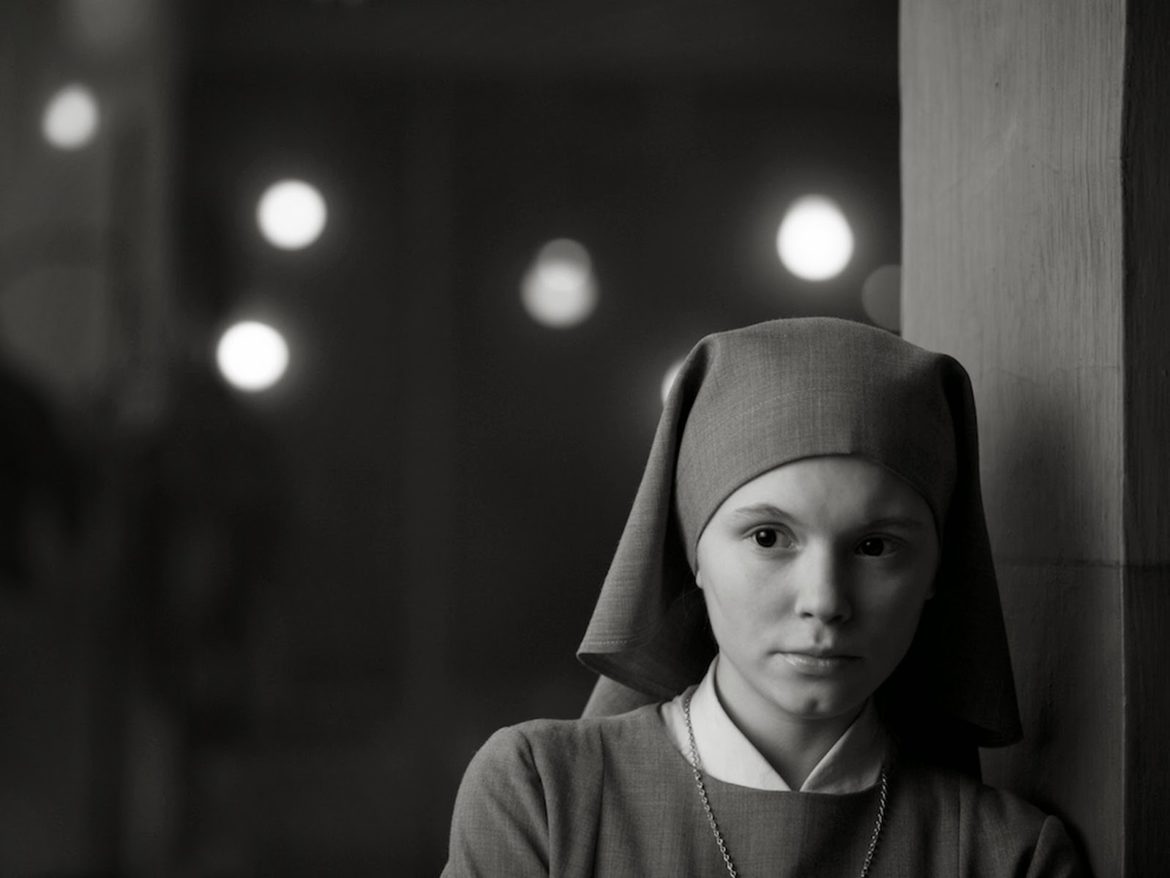Ida, a haunting Polish film tracing a young woman’s journey into the past (both her own and her country’s), has to be one of the most gorgeous looking films of the year. Released in 2013 but in contention this awards season, it ought to be nominated for cinematography and editing, but will more likely fight it out with the Dardennes brothers’ 2 Days, 1 Night for Best Foreign Film, unless Boyhood somehow manages to win that one, too.
This is the sort of film invariably described as “luminous,” and it is. Shot in crisp black and white, carefully framed to the point where multiple shots could be printed and hung on a gallery wall, and presented in Academy ratio, it’s simply stunning to behold.
Its title character (the ethereal Agata Trzebuchowska) is a novitiate preparing to take her vows, in the convent where she’s been raised since she was dropped off as an infant. However, she discovers that she has a living relative after all, an aunt named Wanda (Agata Kulesza, excellent) who’d been avoiding her all these years, and is encouraged (well, ordered, really) to make contact with her before becoming a full-fledged nun. This is the first of many revelations, as she ventures into the mysteries and barely repressed horrors of 20th century Europe.
After an unpromising first meeting, hard-drinking, cynical Wanda takes a liking to her stoic charge, and the film turns into a road-movie of sorts, as the two of them travel through the countryside trying to find out what happened to Ida’s parents, and where they are buried.
Ida’s never been anywhere outside the convent, so everything seems both alluring and dangerous. A handsome, Coltrane-loving saxophonist they pick up hitchhiking into town provides occasion for some questioning on Ida’s part, and Wanda’s role as an apparatchik in the Communist government is thrown into stark relief. The film does a good job of showing how this mission impacts both Ida and Wanda in different ways. They mean to seek out and dig up aspects of their shared histories, and it’s clear a lot has been buried in the Polish countryside.
The Academy ratio framing also serves a narrative purpose, along with being visually arresting. Pawlikowski and his DPs Ryszard Lenczewski and Lukasz Zal use negative space in the box-like frame to great effect – again and again, characters appear just along the bottom, as though they are themselves at risk of burial under the weight of the image. There’s a sense of compression, of being smothered by the world, which suits the often bleak material.
Viewers will have to decide for themselves what to make of Ida and Wanda’s final choices in the film, and how they relate to each other. But what lingers in Ida is the fragile beauty of the images, the struggle of its characters to know and define themselves, and the heartbreaking ironies of the past, hidden in plain sight in the present.

